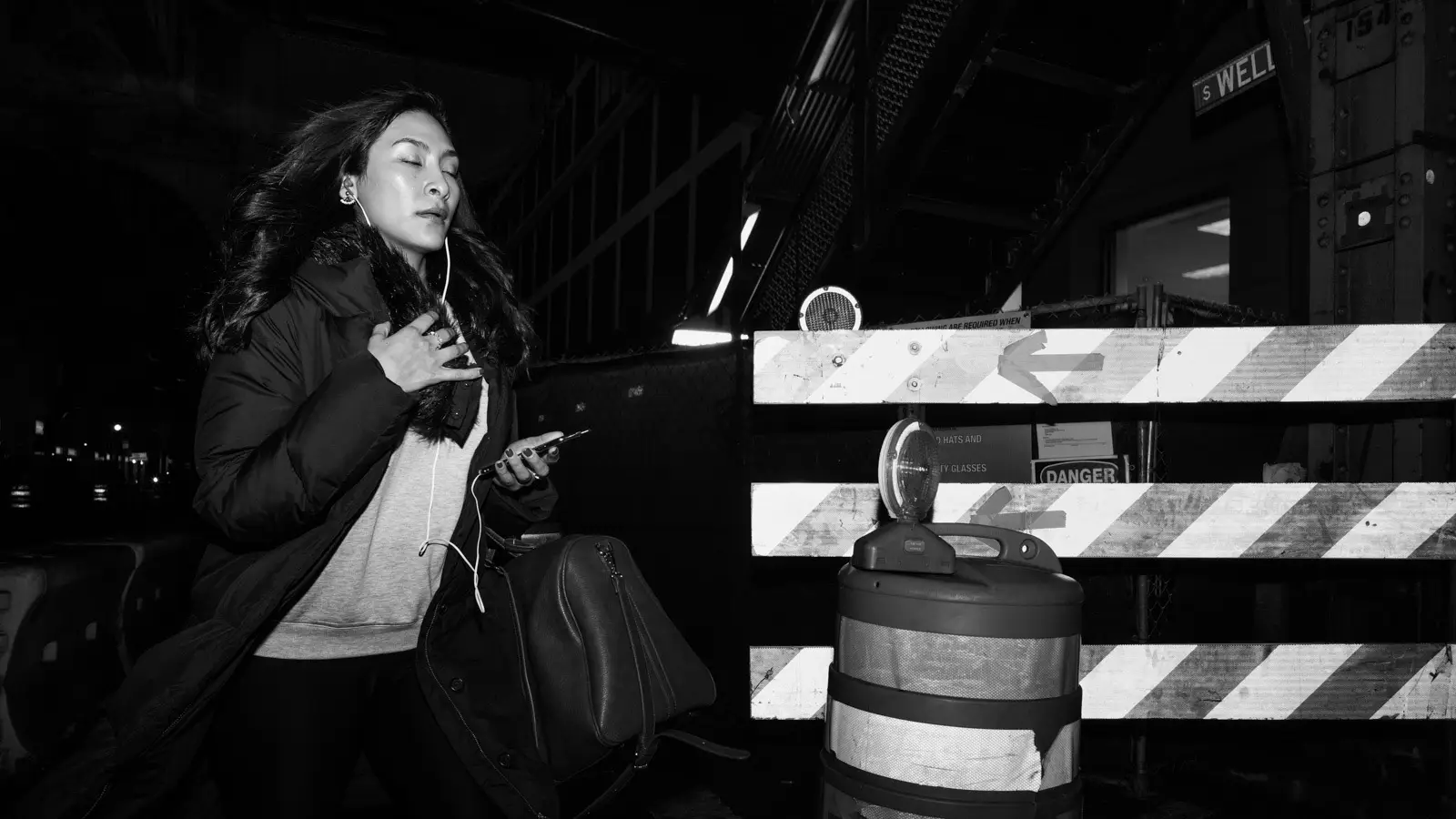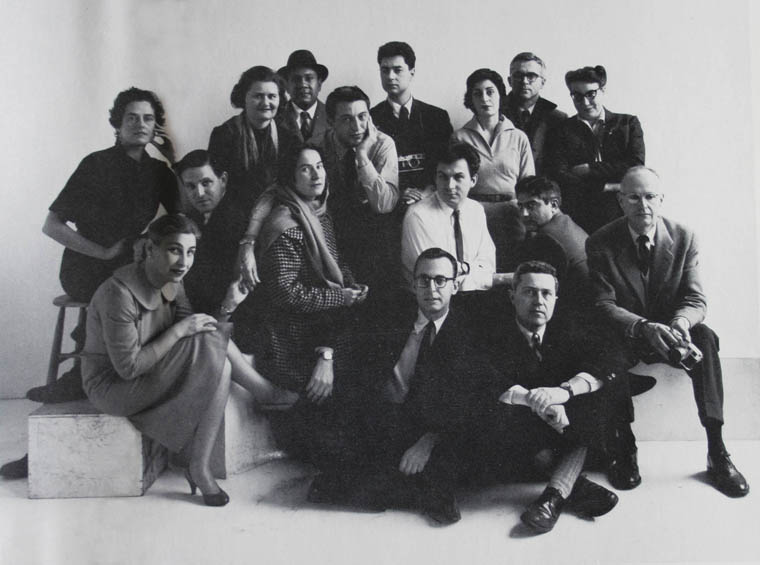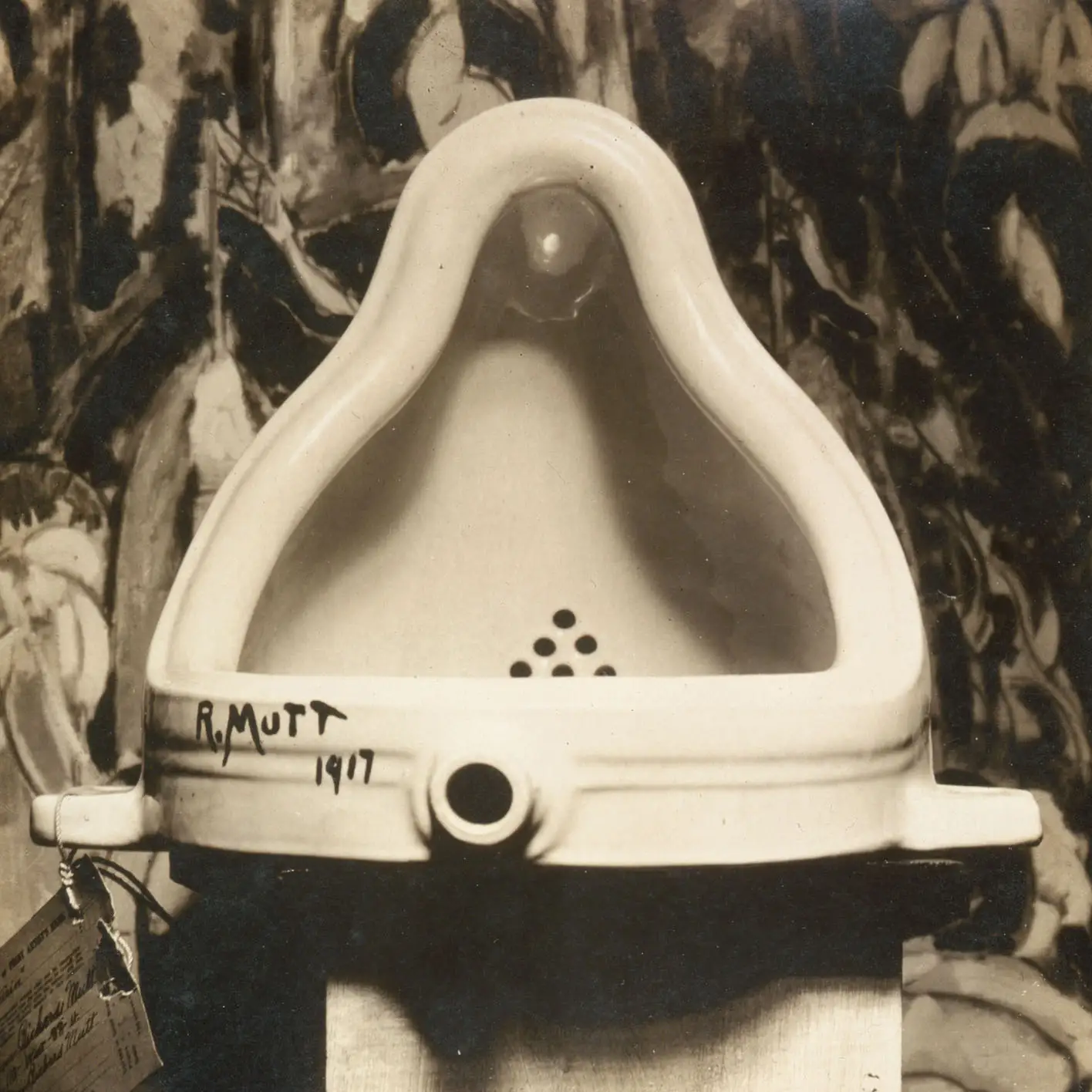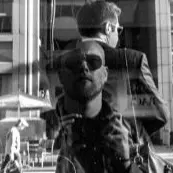Using the Phase One IQ3
Shooting the Phase One IQ3 Achromatic and Trichromatic
I attended a workshop in Monterey California where I was able to borrow an absolutely insane camera setup.
First, a caveat in case the Googles brought you here and you don’t know or care who I am. You should know that I am primarily a street photographer. I.e. I have absolutely no business writing anything about a medium format digital camera system that costs as much as a car and is designed for studio work and landscapes. With that out of the way, let’s continue.
The image is of a workshop participant who kindly modeled for me. It is being displayed as a .png at 1680px wide and 72ppi, aka its downscaled for the web. The blacks and midtones look too dark and the highlights a bit too bright. You still get a decent idea about the capabilities of the camera, but if you want to be blown away click the image and a full size ~90mb file will open in a new window so you can see the file in its full glory.
In the preview image on the upper right is the 200% crop of his face. It might seem a tiny soft, but the image on the lower right is just below his face and as you can see it is tack sharp. You can not only easily read the Alpa on his lanyard strap, but the probably 10 point font Capture Integration on the lanyard itself. You HAVE to click through to the full size version to really appreciate the resolution and tones.
This photo was taken with the Achromatic back (a black and white only medium format CMOS sensor) on the XF body with a 35mm (equivalent to 21mm on full frame) blue ring (really good) lens. It was handheld, though I did intentionally try to steady myself before taking the shot. Still, it is a tiny bit out of focus or motion blurred (which we will talk more about later).
My takeaway is that using this camera without a tripod is not nearly as easy as a smaller mirrorless or dslr camera. It is large and heavy, and at 100mp it exaggerates flaws. That said, if you are willing to shoot at 1/320th+ and can autofocus (or are magically good at zone focusing) this camera will give you the most incredible results you have ever seen. The dynamic range is otherworldly, the resolution seems impossible and the tools available on the XF back are so clever you will be surprised anyone even thought of them.
Oh yea, it costs as much as a car, and not a cheap one. Should you buy it for street photography? Absolutely not, that would be insane. Completely coincidentally I am looking to sell a kidney and some Sony gear if anyone is buying.
Resolution
Not super impressed by that last photo?
Same caveat, the downscaled version isn’t nearly as nice as the full size file. This time it is 130mb+ though, you’ve been warned.
So what are we looking at? This is also handheld, but this time we nailed focus and managed to avoid motion blur (hooray!). I don’t think I really need to talk you through the details, but take a look at the stitches on the hat, the eyebrows, the dust on his glasses!! In-sane.
So yea, this one is actually quite a bit more impressive than the previous. So why is this here and not there? Well I am a black and white shooter and I thought it made more sense for the tl;dr to focus on something closer to the typical results I got shooting hand held over the weekend. But you, dear reader, have been rewarded for sticking around and getting to see how stupidly incredible the resolution of this camera actually is. Would it be better on a tripod? Maybe. Would I print this on the side of a building as is? You betcha! Oh, this is also straight out of camera, no processing done at all. Aren’t the colors fantastic? Trichromatic… we will discuss that more later.
Dynamic Range
Proper exposure? Who needs proper exposure!?
This fancy little slider widget is just jpgs, so ignore the resolution. But as you can see the dynamic range is absurd. Most of the rocks and plants in the original are basically black.How did it pull that up without introducing a bunch of noise and get more or less correct colors? 16 stops of dynamic range, that’s how! And unlike a lot of digital cameras, its actually just as easy to pull down highlights as long as they don’t clip.
That all said, of course a properly exposed image will look better, but this severely underexposed one was certainly not so lost you couldn’t post it to Instagram. Not bad, not bad at all.
Focusing
Focusing is hard.
Maybe you’re saying, “hey, its not that bad for a street photo”. I actually converted this from color and upped the contrast a touch. That is all, but its enough to make it look almost acceptably sharp on the web. But as you can see by the 100% crop areas it’s really, really soft.
What is the problem? Is the autofocus bad? No… I tend to move, and I find myself shooting subjects that are moving across the frame. This doesn’t seem to be something I’ve figured out how to make work with AF. I’m sure some camera systems, particularly those designed for sports, would solve this issue. But I don’t like complicated shooting experiences and I like black and white sensors.
My solution to this issue is zone focusing with my Leica rangefinder lenses, with convenient distance scale markers on them. I can just guesstimate how many feet/meters I will be away from someone when I push the shutter button and they are in focus! Now of course that works best when shooting stopped down (f11 is ideal) and on a wide lens which has much more depth of field (I shoot a 21mm on full frame in part for this reason). This has allowed me to put my Leica Monochrom on f/11 and get roughly 3 feet to infinity in focus. Yea, it becomes a point and shoot. Well guess what, my in focus hit rate is nearly 100% and I can just “focus” on composition.
Here is the problem with the Phase One. First, a larger sensor means less depth of field at an equivalent focal length. I was shooting a 35mm medium format lens, which has the same angle as a 21mm full frame, but substantially less depth of field. I didn’t record the exact numbers but if I put the far f/11 marker at infinity, like I would on my Lecia, I believe the near distance was around 10 feet rather than the 3 feet I’m used to. That doesn’t really work for me, I tend to be anywhere between 3 and 10 feet from my subject. So I had to fiddle a lot while shooting, and guessed wrong quite a bit. In case you aren’t familiar with these distance scales, the nearby distances are further apart on the lens than the distances further away. So if I was shooting something at 3 feet I might have only been getting 2.5 to 4 feet in focus.
In case you use autofocus for street, the Phase One seemed to work quite well in decent light. It was great if the subject and I were standing still (see “resolution” photo above) but that was rare.
The very first image in this post was actually zone focused. We were both standing still but I guessed he was about 7 feet away, went with that, and was clearly pretty close! So why, then, did I specifically guess 7 feet instead of just the range? Well it turns out a 100mp sensor is waaaaay more critical, aka its “circle of confusion” is much larger than what you will see as in focus with your eye. So you actually have much less wiggle room for “acceptably sharp” if your distance is off.
Is it workable? I’m not sure. I think I just need to get a lot better at guesstimating distance. I am ok at it after years of zone focus, but clearly I would need to raise the bar to switch to a Phase One. YMMV.
Motion Blur
A bit more on shitty pictures.
At first glance this image seems to almost be in focus, which as it turns out, it is! The issue here is actually motion blur. If you look closely at the 100% crop of the bag in the upper right corner you can see how the stitches smear, almost to the point of doubling. This is because I shot at 1/60th of a second on an 80mm lens. Experts among you are probably crying “that should blur!” as it breaks the 1/focal length rule of shutter speed… e.g. I should be shooting at at least 1/80th rounded up to 1/100. Trust me I tried. I ran in to this issue at 1/100, still some at 1/250 and didn’t see it completely disappear until 1/320. That seemed to be the general consensus of the group. With medium format most recommended 2/focal, some 3/focal.
The problem with this of course is you are losing light. As we discussed to even attempt to zone focus I need f/11, and now I need 1/320, and if I want to stay near base ISO (Iso is not nearly as good on these cameras as their full frame equivalents), I pretty much I can only shoot handheld when there is a shitload of sun. The Achromatic actually has an advantage here, which I will touch on below.
Achromatic vs Trichromatic
All the colors or none of the colors?
I shoot black and white. Why? Because in a black and white photo with a person’s face in it, you can connect with them emotionally without distraction. In a color photo you start to connect emotionally but then are quickly distracted, “hey, is that a purple flower in their hair?”. Our eyes are drawn to human faces, but also to contrast and color, so while you may notice the person first, your eyes will quickly wander the scene. If you shoot in a controlled environment you can make sure every element in your scene adds to the photo, rather than distract from it. In street photography it is hard enough to find a good subject, focus and frame them, hope the background is ok without having to also worry that the person behind my subject has a really bright red handbag. So, I shoot black and white. It removes an entire variable from my photography and makes getting the result I want much easier. Plus I personally like the look.
That is why I went to this workshop to borrow a Phase One Achromatic, a 100mp black and white only camera! The Leica Monochrom is the only other black and white camera available. But the Phase has over 5x the resolution, so why wouldn’t I want to play with it?
Ok, we get it Chris, you publish black and white, but why not shoot a color camera and convert? That gives you a bunch of color channels to fine tune your image and add/remove contrast in specific areas! Well, to get technical for a moment, a regular color camera has something plastered over the sensor called a Bayer Filter (or X-trans for you Fuji folk) which only allows a subset of the wavelength of light in to each sensor pixel. So one pixel only detects reds, the one next to it green, the one next to that blue, etc. etc.. Very smart software then uses that data, and the proximity of the pixels, to guess what the actual color coming in for each pixel was. What should then be apparent, is in a sense the camera is not using every pixel to its full potential.
By removing the Bayer filter every single pixel can just capture how much light is hitting it. The result is a very impressive increase in sharpness. If that matters, and personally I think it does, then having a monochrome sensor is more valuable to me than being able to post process color channels in a converted b&w. The other, possibly more important, side effect of removing the color filter is that a LOT more light gets through to the sensor. This is reflected in ISO sensitivity. Monochrome sensors tend to have nearly double the ISO range of color sensors. That is a whole lot of leeway to shoot faster shutter speeds in lower light.
From that terribly long winded explanation you can see why I would want the Phase One Achromatic over the Trichromatic. Funny thing is, the resolution is so insane on both that I actually think that is a wash, whereas the difference between the Leica Monochrom and its color counterparts is quite apparent. The real difference for the Phase is usable ISO. The Trichromatic started having ugly color noise at 1600, where the Achromatic was chugging along fine at 3200 and only started getting a noticeable, but still pleasant grain at 6400+.
Conclusion
Can the Phase One be used for street photography?
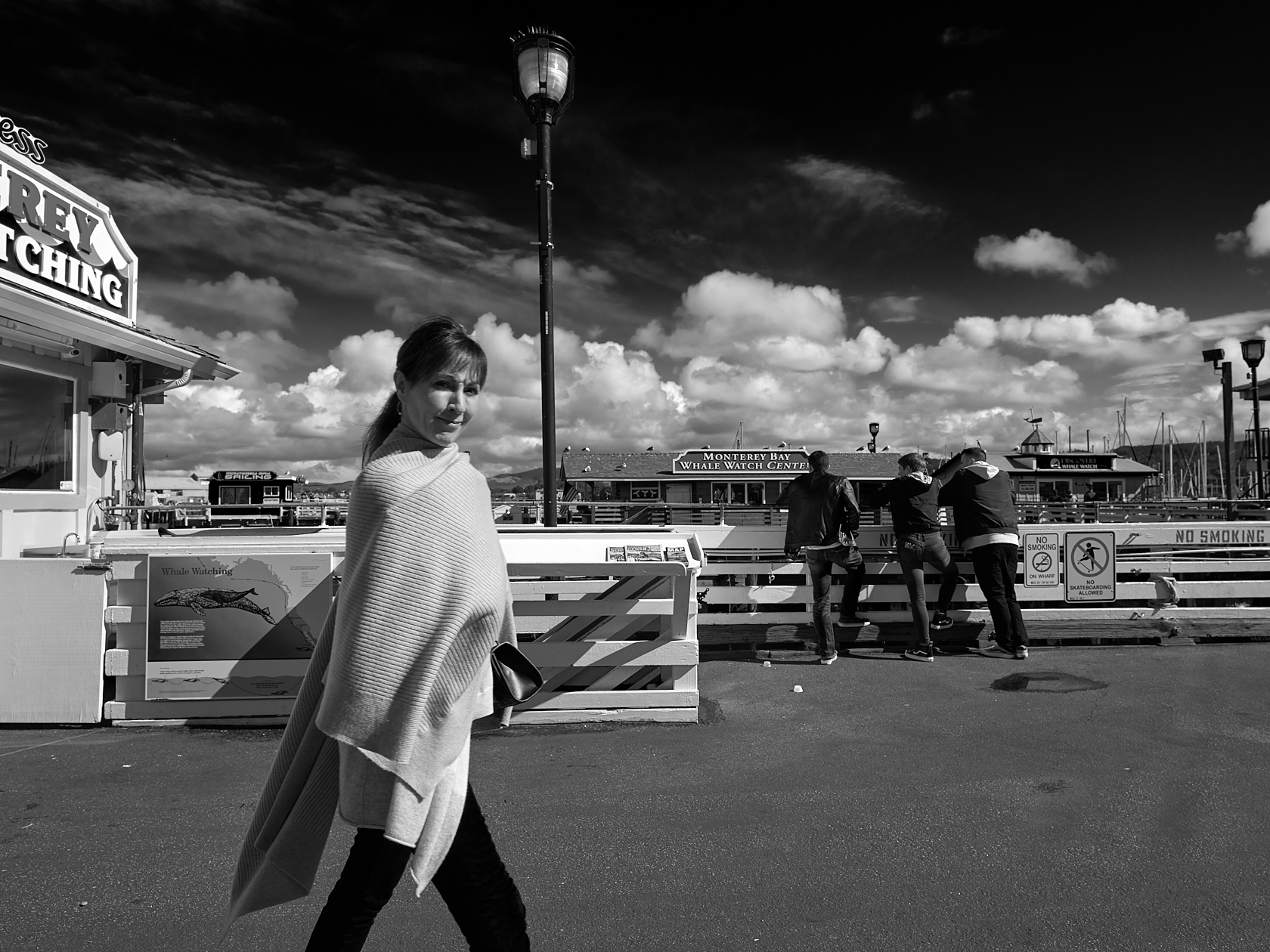

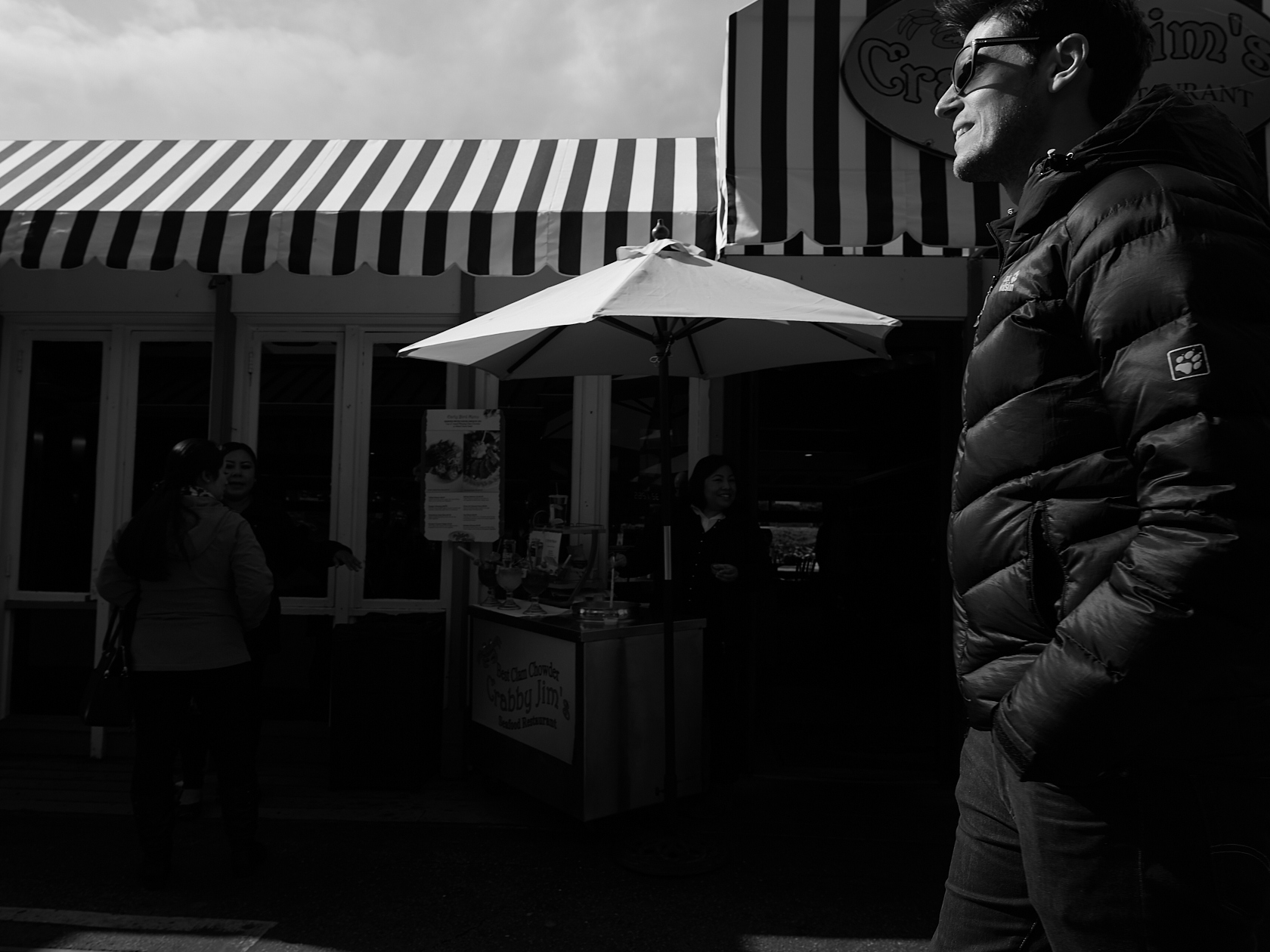


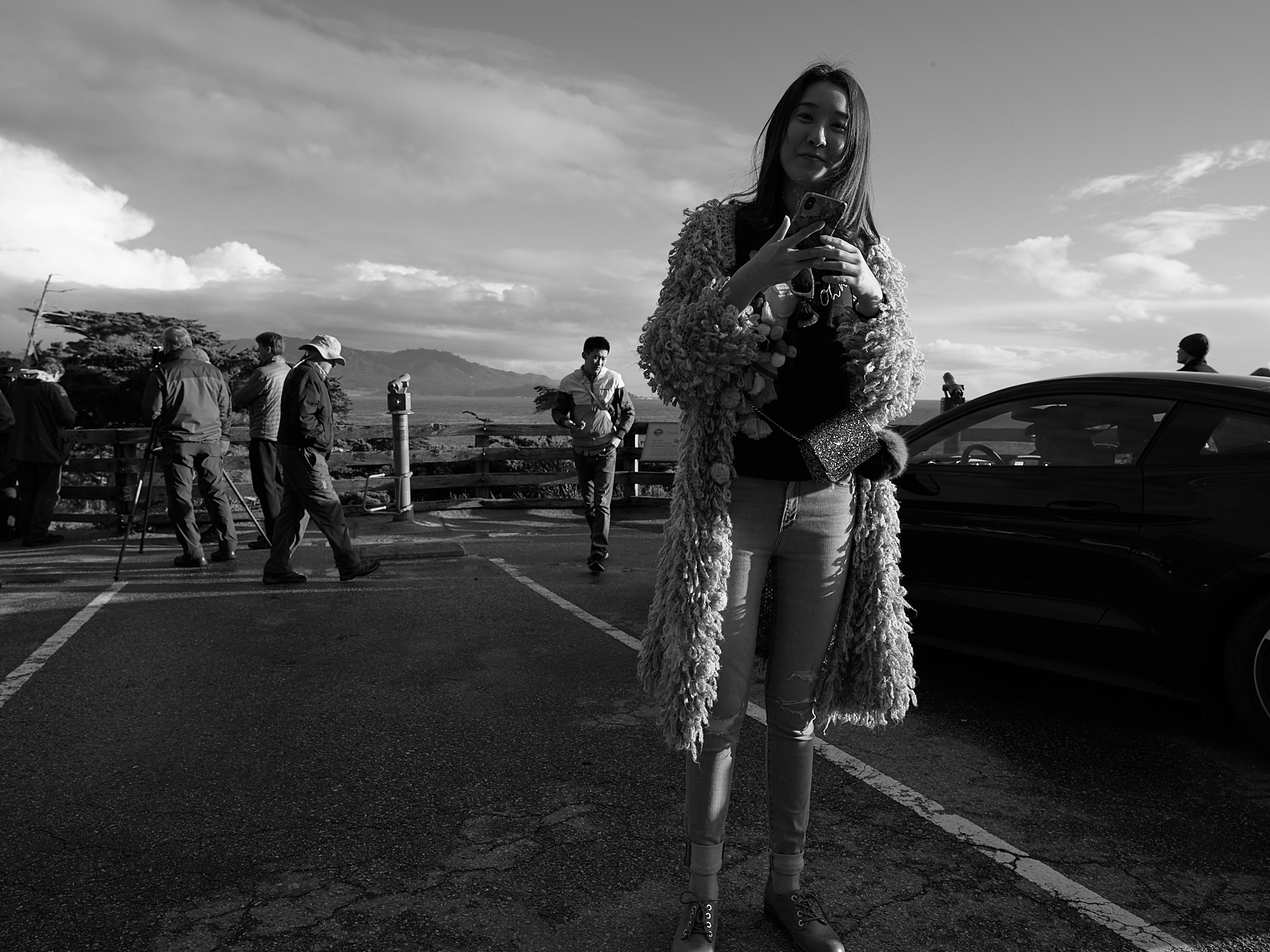
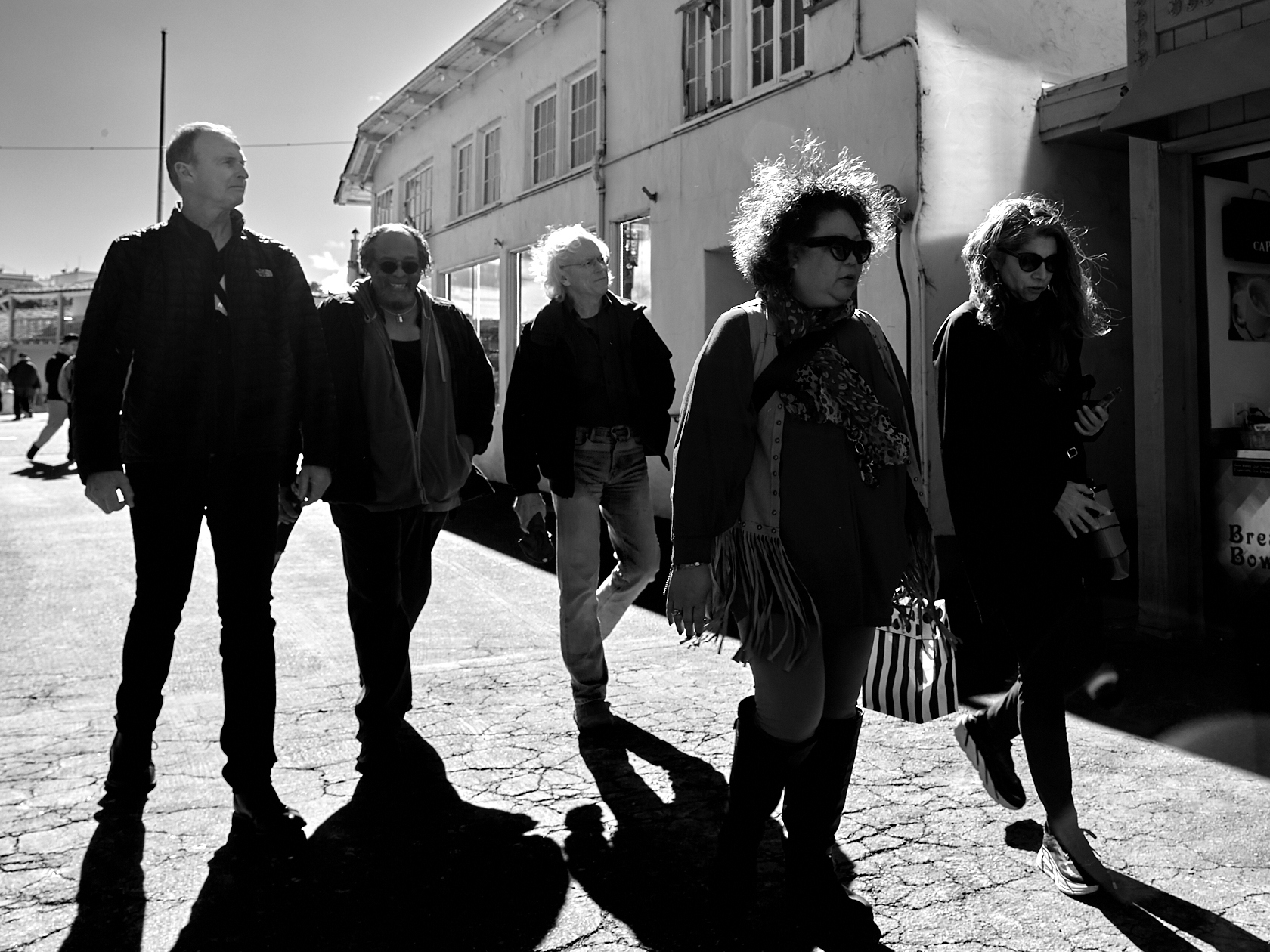
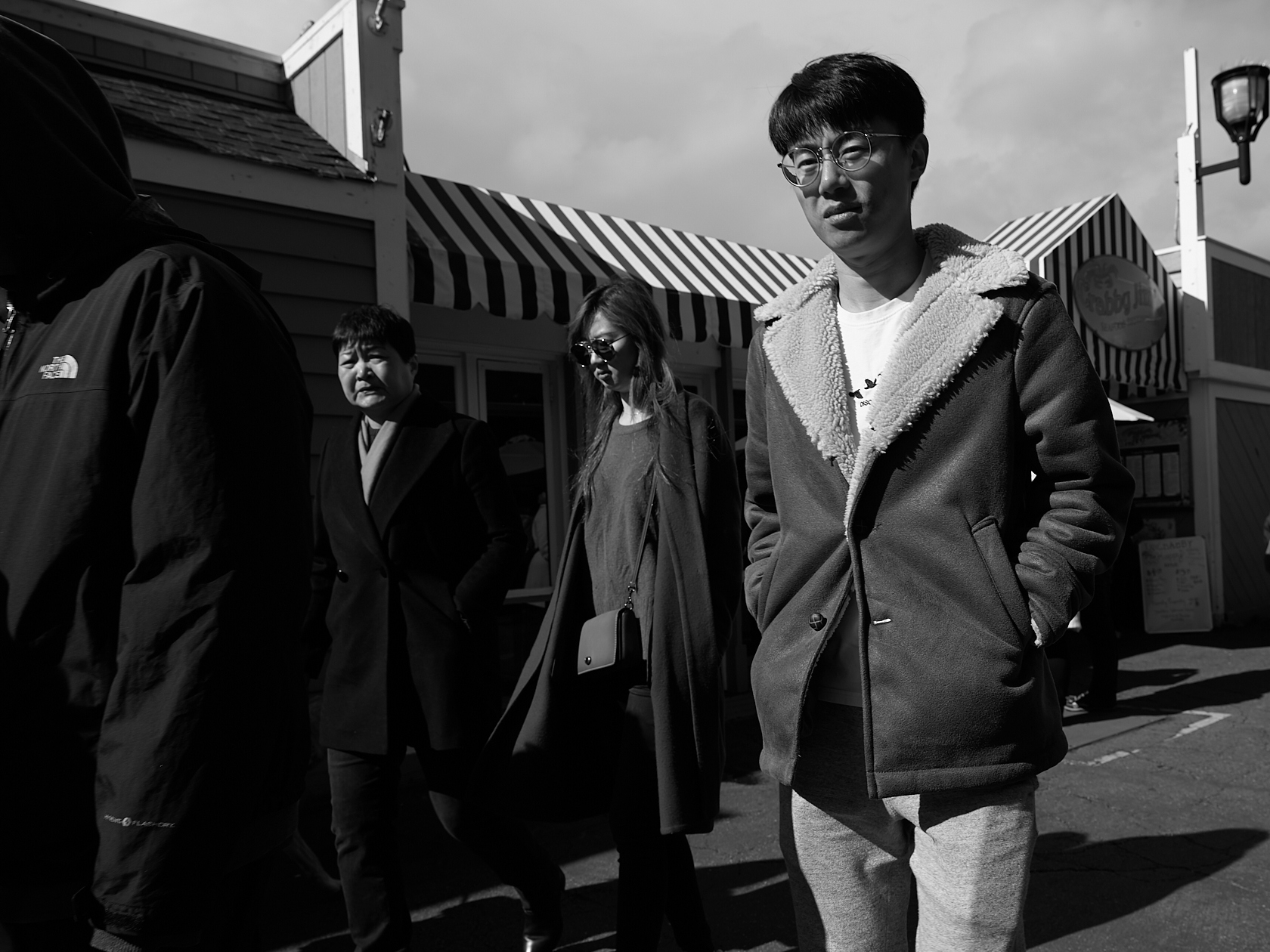
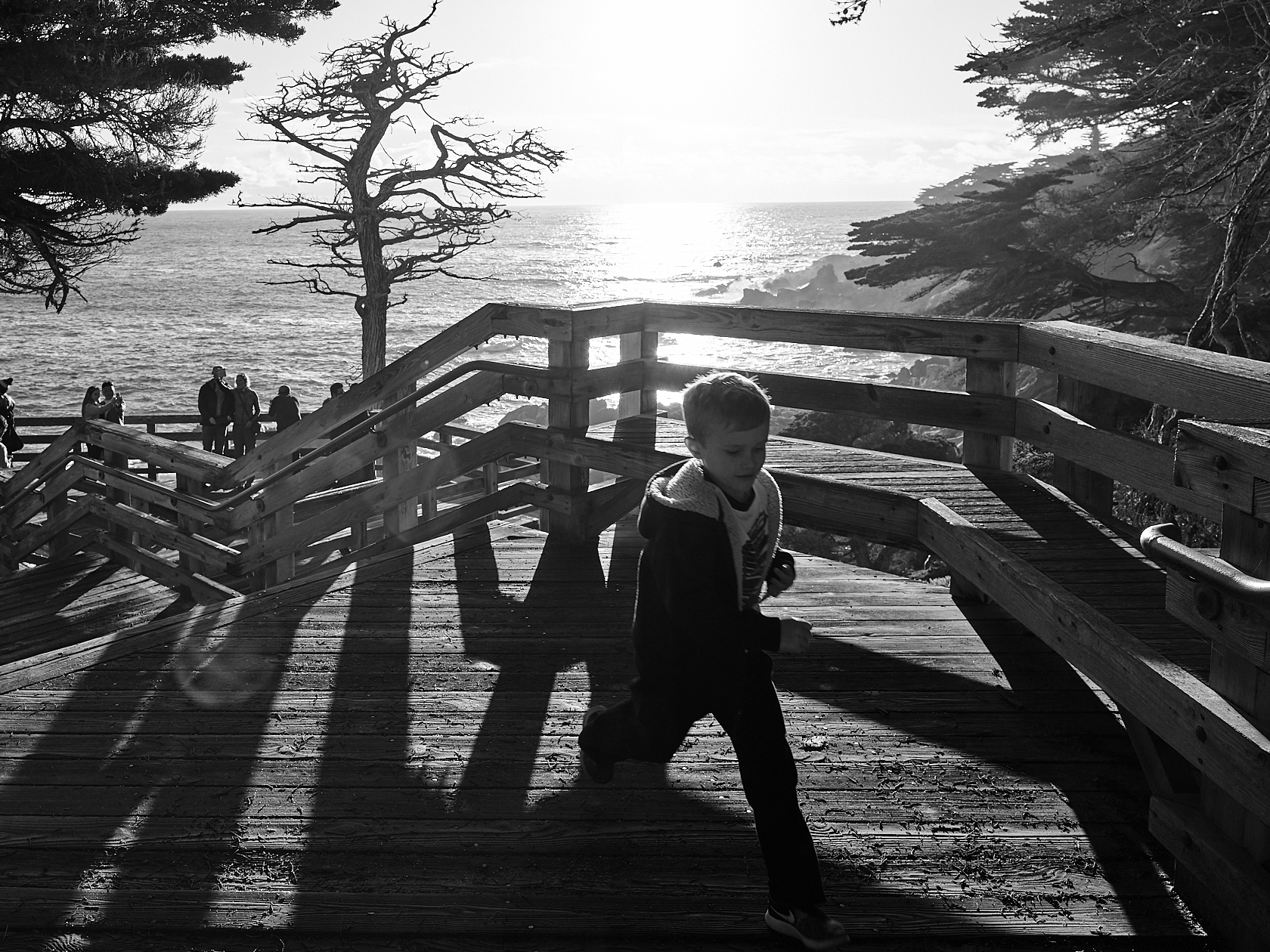
I think these street photos I took speak for themselves and I’ll let you decide.
They aren’t my best work ever. I could use a bit more time to get fully comfortable with operating the camera. It’s big, it’s loud, the shutter clacks like a ladder just fell over, it’s about as subtle as chasing someone with a car. But it has a waist level viewfinder, which might be the best camera feature I have ever used.
What it all comes down to is that with enough patience and dedication the camera takes absolutely incredible pictures. I would love to own one.
A Special Thanks
To Dave Gallagher and Brad Kaye from Capture Integration for putting on such an amazing event, sharing knowledge, technical know how and trusting me with crazy expensive gear. Also to Francis Westfield from Phase One for his support, sense of humor and most importantly waist level viewfinder.


